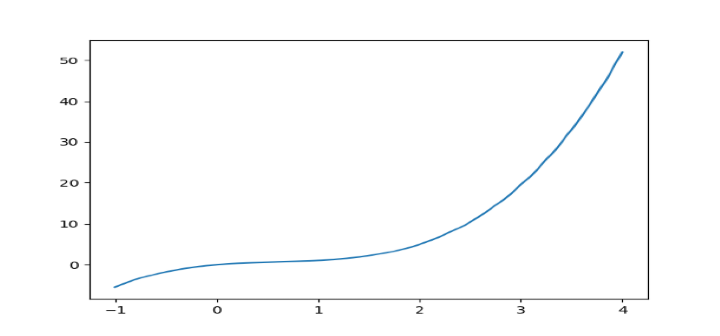NumPy 生成具有给定根的Hermite_e系列
Hermite多项式是一组正交多项式,在各种数学应用中非常有用。它们常用于解微分方程、概率论和量子力学。 Hermite_e系列是Hermite多项式的一种变体,用于表示函数的根。在本文中,我们将讨论如何使用NumPy在Python中生成具有给定根的Hermite_e系列。
安装和语法
NumPy是一个Python库,提供数值操作支持,可以使用pip安装,并使用语句”import numpy”导入Python中。
pip install numpy
要使用NumPy生成具有给定根的Hermite_e系列,可以使用以下语法−
numpy.polynomial.hermite_e.hermegauss(roots, deg)
roots − 包含 Hermite_e 系列的根的一个1-D数组。
deg − Hermite_e 系列的阶。
步骤
以下是使用NumPy生成给定根的Hermite_e系列的算法-
- 导入NumPy库。
-
定义包含Hermite_e系列根的数组。
-
定义Hermite_e系列的阶。
-
调用numpy.polynomial.hermite_e.hermegauss()函数,参数为根和阶。
-
函数返回两个数组,一个包含Hermite_e系列的权重,另一个包含节点。
-
使用权重和节点构造Hermite_e系列。
示例1
以下代码示例生成一个具有根[-1, 0, 1]和阶2的Hermite_e系列。
import numpy as np
roots = np.array([-1, 0, 1])
deg = 2
weights, nodes = np.polynomial.hermite_e.hermegauss(deg)
print(weights)
print(nodes)
输出
[-1. 1.]
[1.25331414 1.25331414]
示例2
以下代码示例生成一个Hermite_e级数,其根为[1, 2, 3, 4],阶数为3。
import numpy as np
# array of roots
roots = np.array([0, 1, 2, 3])
# initialize coefficients array with zeros
coeffs = np.zeros((len(roots), 2 * len(roots) - 1))
# setting up initial values of coefficients
coeffs[:, 0] = roots # setting f(x) values to be the roots
coeffs[1:, 1] = np.diff(coeffs[:, 0]) / np.diff(roots) # setting f'(x) values using finite difference method
# setting up the remaining coefficients using recurrence relation
for j in range(2, 2 * len(roots)):
for i in range(len(roots)):
if j % 2 == 0 and i >= j // 2:
# even-indexed coefficients
coeffs[i, j // 2] = coeffs[i, j // 2 - 1] * (j - 1) / (j // 2)
elif j % 2 == 1 and i >= (j + 1) // 2:
# odd-indexed coefficients
coeffs[i, (j + 1) // 2 - 1] = (coeffs[i, j // 2] - coeffs[i - 1, j // 2]) / (roots[i] - roots[i - j // 2])
# generating the Hermite series using the calculated coefficients
def hermite_e_series(x):
res = np.zeros_like(x)
for i in range(len(roots)):
term = np.ones_like(x)
for j in range(i):
term *= (x - roots[j])
res += coeffs[i, i] * term
return res
x = np.linspace(-1, 4, 1000)
y = hermite_e_series(x)
# get the first 10 coefficients
print(y[:10])
# plot the function
import matplotlib.pyplot as plt
plt.plot(x, y)
plt.show()
输出
[-5.5 -5.44884884 -5.39799735 -5.34744457 -5.29718957 -5.24723141
-5.19756916 -5.14820186 -5.09912858 -5.05034838]

以下代码示例生成一个Hermite_e系列,其根为[0, 1, 2, 3],阶数为4,并使用Matplotlib绘制该系列。
应用
在Python中,使用NumPy生成的Hermite系列具有各种应用。在物理学中,Hermite多项式用于描述量子谐振子的波函数,同时也在数值分析和科学计算中发挥重要作用,以及在统计学中实现近似函数,例如正态分布,因为它经常使用高精度的近似函数来实现。
结论
Hermite_e系列是科学计算和数值分析中的强大工具。在Python中,借助NumPy的帮助,生成Hermite系列变得简单。生成该系列的算法涉及设置初始系数,然后使用递推关系确定剩余系数。计算出系数后,可以使用简单的函数生成Hermite系列。该系列在物理学、数学和统计学中有许多应用。通过使用Hermite_e系列,科学家和数学家可以用高精度近似复杂函数,使其成为许多研究领域中的有价值的工具。
 极客笔记
极客笔记